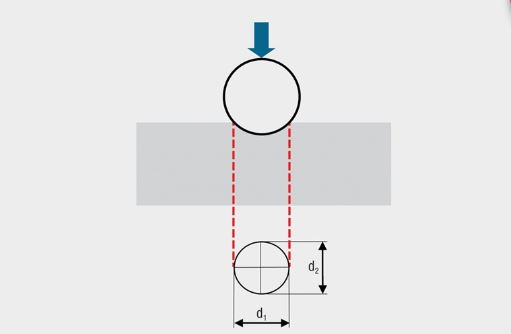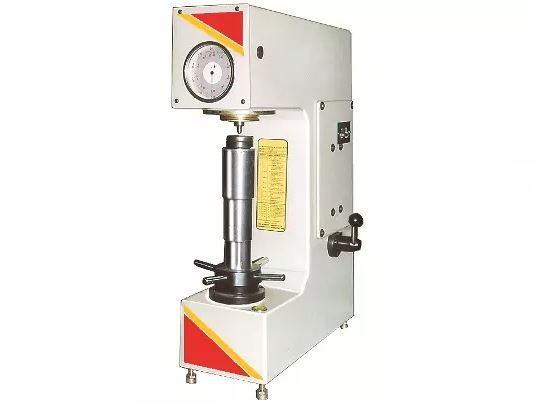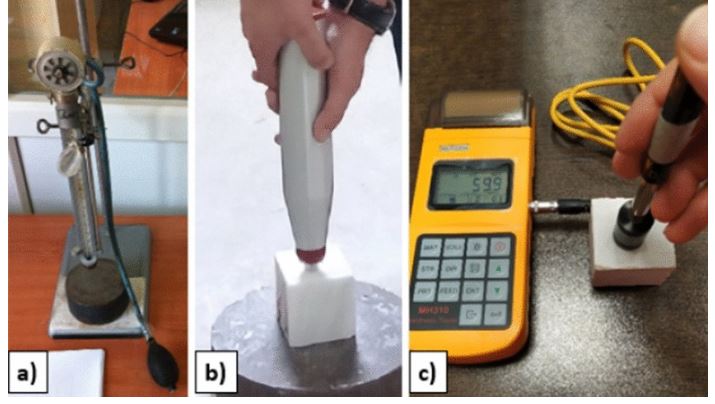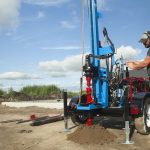Material hardness testing provides engineers with a way of determining the hardness of different types of materials. The results from these tests are vital as they provide critical performance information that help in material selection. For example, hard metals make excellent tool steels for milling and cutting operations in the workshop. Hardness highlights the presence of material properties such as wear resistance and toughness. Also, it shows a material’s susceptibility to issues such as hydrogen induced stress cracking.
In this article, you will learn about material hardness testing process, the available methods for testing, and common test instrumentation.
Hardness Testing Process
Generally, materials behave differently under different types of loads. For example, a material could be good in resisting cyclical loads but not do well when experiencing impact loads. This variation in loading resistance is like material hardness. First, there are different types of material hardness namely scratch, indentation, and rebound/dynamic hardness. Then, there are different characteristics of the test sample. These two factors influence the testing results and are key considerations in the hardness testing process.
Types of Hardness
- Scratch Hardness: This refers to a material’s ability to resist scratches. It is a vital characteristic of brittle materials such as ceramics and cast iron because they do not undergo plastic deformation. Usually, this type of hardness is checked for materials in applications that are sensitive to scoring. For example, an engine cylinder liner encounters piston rings and foreign solid particles in fuel as well as engine oil. The hardness of such materials should be greater than whatever materials they have contact with in such applications.
- Indentation Hardness: This hardness is of primary interest to engineers and metallurgists because it shows resistance to permanent deformation under continuous loading. After checking for this type of hardness, it is necessary to remove the stress concentration by grinding out the indentation.
- Rebound/Dynamic Hardness: This is also known as elastic hardness because it is a measure of the energy the material returns to the indenter. Usually, testing this type of hardness involves dropping a diamond-tipped hammer from a height, and checking the rebound height. The higher the rebound, the more the hardness.
Test Sample Characteristics
The test sample characteristics is key in the hardness testing process because it determines the suitable testing method. This section looks at a few of these characteristics.
- Type of Material: The type of material and its expected hardness level influence the testing method. For example, Rockwell scale which uses diamond indenters and high PSI loading are ideal for hardened bearing steels with small grain size. While Brinell scales suit the need for larger scales when testing cast iron and powder metals.
- Sample Thickness: Although hardness testing is minimally or completely non-destructive, there is thickness requirement for the measurement process to be viable. This thickness varies depending on the measurement method, but there is a general recommendation of at least ten times the indentation depth.
- Sample Size: When using smaller parts as samples, the loads must be lighter and proper spacing for indentations. As for large parts, their fixtures should be firm enough to prevent slippage or movement during testing. For cylindrical samples with small diameters, roundness correction factors are applied to test results depending on the convex cylinder surface. This is to compensate for the difference between axial and radial material flow.
- Gage Repeatability and Reproducibility: This is vital when carrying out any form of testing. Because of material variation and the inability to retest the same area on depth measuring testers, delivering this could be difficult. As a result, it is advisable to use highly consistent test blocks.
- Test Scales: In some situations, it becomes necessary to test in one scale and report the results in another. To achieve this without errors, only use and actual correlation that came about by testing on the different scales. Because established conventions may not provide reliable results. ASTM E140 is a good resource for scale conversion information.
Hardness Testing Methods
Factors such as the type of material, hardness level, and other considerations in the previous sections are what determine the suitable testing method.
Rockwell Test
This is the most common method for checking indentation hardness with over thirty different scales. It involves pressing an indenter, usually of cone geometry, into a sample at a minor load to establish a datum for measurements. Next, there is application of different test loads until reaching a certain depth. Then, measuring the penetration and comparing its value to those for other samples to determine the relative hardness. Because of the risk of cracking, this method is ideal for only metals containing carbide, if not test results may not be accurate. Also, it is good for differentiating between materials with similar levels of carbon content, and for testing bearing steels with small grain size. After testing, the Rockwell Hardness (HR) can be calculated based on the depth of permanent indentation (D) and factors that depend on the scale in use (N and s).
[Latexcode]
![]()

ASTM E18 and ISO 6508 outline the standard requirements for Rockwell hardness testing.
Brinell Test
This is good for testing materials with a coarse grain structure. Also ideal for differentiating between high-carbon steels and low-carbon stainless steel. Like the Rockwell test, this is also an indentation testing, but Brinell uses a spherical indenter. After making an indentation for about 10 to 30 seconds, comparison of indentation measurements from other samples helps to determine the relative hardness. The amount of loading varies in this test from 500 kg for soft samples to 3000 kg for hard samples. On completion of the test, the hardness number (HB) is calculated as a function of the test load (F), indenter diameter (d2), and indentation diameter (d1).
![Rendered by QuickLaTeX.com \[ HB = \frac{2F}{\pi d_{2}\left ( d_{2}-\sqrt{d_{2}^{2}-d_{1}^{2}} \right )} \]](https://punchlistzero.com/wp-content/ql-cache/quicklatex.com-0e13dbec729d2b0d34f5f4e163f6210b_l3.png)

ASTM E10 and ISO 6506 outline the standard requirements for Brinell hardness testing.
Vickers Test
This test is useful for testing the hardness of softer materials using a pyramid-shaped diamond indenter. Like the Rockwell and Brinell tests, the test involves pressing the indenter at a specific load and time until reaching a threshold value. There are two types of indenters namely the Knoop indenter, which is for loads of 1 kg or less, while the Vickers indenter could serve loads up to 50 kg. The hardness value (HV) is a function of the indentation diagonal (d) and the test load (F).
![]()
ASTM E384, ISO 4545, and ISO 6507 outline the standard requirements for Vickers hardness testing.
Machines for Material Hardness Testing
In comparison to machines for other types of material testing, those for hardness testing are inexpensive and easy to use. Initially, the design of test machines was for specific test methods. But now, most machines in the industry are able to measure hardness for different methods on a variety of scales. No matter the method or scale, all test machines fall into one of these categories:
- Bench Models: These are the first type of test machines and are common in workshops and laboratories. Their design is for sitting on a workbench and testing sample blocks of the material. Bench models are further classified into two types which are analog models and digital models. Analog machines are manually operated with external dialing that selects the test force. They are very accurate and easy to use, with the display of test results through a dial in front of the machine. Most analog models can carry out only a single method of testing. As for digital models, they are more robust as they have multiple functionalities for variety of test methods and scales. Also, they are computerized, so require more training to use.

- Portable Models: When testing very large metal parts, portable digital models are more viable than bench models. Portable test machines could be for a single scale such as a scleroscope or multiple scales such as a durometer.




